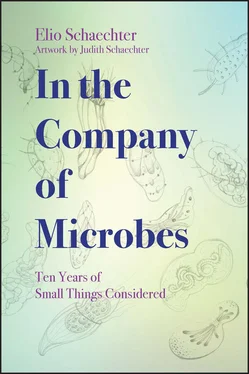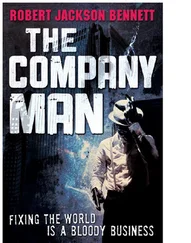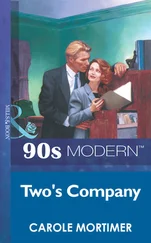1 ...7 8 9 11 12 13 ...17 For the record, the “microsomes” contained ~20 nm “granules,” which were eventually purified and characterized as today’s ribosomes.
Artifacts, Artifacts…
Obviously, looking at the “thing” is not that simple. The “thing” could be an artifact of sample preparation. The history of electron microscopy has provided us with many such artifacts (7,8), and this remains an issue today for the new spectroscopic in vivo methods (9,10). There is also the sampling problem—the variability between and within cellular populations. It is challenging to maintain populations of “model” bacterial strains “frozen in evolution” and “constant,” therefore reproducible between different laboratories. In addition, the physiological state of a cell population varies with the time of sampling, as well as with environmental and nutrient conditions (11,12). This would be a shock for Feynman, who thought about the “thing” as something static, picturing biomacromolecules as “sitting” somewhere. This is important for nanotechnology because when things “do not sit,” “molecular hell breaks loose” thanks to the second law of thermodynamics—the entropy (disorder) seeking to maximize itself. Indeed the greatest achievements of nanotechnology have been so far mainly in the areas where molecules do “sit,” i.e., in the solid state.
The Sum of the Parts
Which brings me back to the “reductionist’s problem” encountered when attempting to reduce (“soft matter”) biology to chemistry. Can we really understand a “living” system (a bacterial cell) by taking it apart, then identifying all its components by their chemistry and structure? This, after all, is what X-ray crystallography and NMR are achieving. The biochemical and physiological functions of many proteins and nucleic acids have been elucidated through enzymology and genetic studies (mutant analysis, for the most part). But to reiterate Craig Venter’s observation: “ No single cellular system has all of its genes understood in terms of their biological roles ” (13). In fact, a protein may have two (or more) functions (moonlighting proteins); e.g., glutamate racemase, essential for providing the d-glutamate needed for bacterial wall synthesis, also inhibits DNA gyrase. I would argue that today’s fundamental challenge in cellular biology is that RNA and proteins do not “sit”; they move, as does ATP, ions, water molecules, DNA, the ribosomes, even the cell itself. They all move on time scales that span about 10 orders of magnitude, from picoseconds to seconds! And they move about in a crowded environment, where molecules and macromolecules in very close molecular proximity interact with each other, breaking and making chemical bonds, non-covalently attracting and repelling one another with molecular forces ranging during the cell cycle from the ultra-weak (transient, non-heritable) to the very strong (permanent, ‘heritable’) (4,5,14-17).
The Humpty Dumpty Problem
The great achievement of the reductionist paradigm, of the taking apart of living things, is the demonstration that all we see there is just “ordinary” chemistry and physics. The chemistry of the lipids, proteins, and particularly the nucleic acids (the genetic code) is the ‘same’ for all living things; unique living systems are each a variation on the same chemical theme composed from relatively few chemicals—the “building blocks of life” (12). These biomolecules and biomacromolecules have been synthesized by non-biological methods of organic chemistry, starting with Wöhler’s synthesis of urea in 1828 and culminating with the chemical synthesis (and enzymatic assembly) of the chromosome of the bacterium Mycoplasma mycoides (13). There can be little doubt that all such synthetic biomacromolecular products will have the same properties (chemical and biological) as those synthesized enzymatically by cells. However, it is when the molecules and macromolecules come together in a dynamic environment that the “living state” of matter is born. Because we do not yet know how the “living state” of matter comes about, we are astonished at seeing bacterial cells “do what they do”—growing and dividing at an incredible speed, sometimes in less than an hour! Even more astonishing is the fact that cellular populations of progenotes and universal ancestors (18,19) emerged 3.5 billion years ago!
In my opinion, efforts should focus on “putting Humpty Dumpty together again” (20), synthesizing “life” (21), or coaxing “life” to emerge from a “biotic soup” (22), mimicking the emergence of the chemistry of life from the “prebiotic soup” about 3.5 billion years ago (23-25). These “synthetic” approaches will have to take into account the physical chemistry underlying the in vivo state of living cells, i.e., the transient interactions of crowded biomacromolecules within them, and their cyclic non-equilibrium nature (14-17,20). Here Richard Feynman’s other, much later sentiment comes to the rescue: “ What I cannot build (create), I cannot understand .” It is clear that microbiologists are in a unique position to devise new protocols to study and even create life, without having to chemically synthesize anything, by taking bacterial cells apart, “killing them gently,” and then trying to revive the “biotic soup.” There are no fundamental reasons why such protocols would not work, and they would remove some of the mystery from Pasteur’s dictum “ Omne vivum e vivo .” We just need to figure out how to handle the spheroplasts, protoplasts, the nucleoid, ribosomes, and large protein clusters! Play with them; make them assemble into a living condition. Admittedly, this may not be as easy as just “looking at the thing” but may well turn out to be quite valuable.

Jan Spitzer is R&D manager of Mallard Creek Polymers in Charlotte, North Carolina.
References
1. http://www.goodreads.com/quotes/127643-poets-say-science-takes-away-from-the-beauty-of-the
2. A Letter to the Blog by Franklin M. Harold: Let’s Put Organisms Back in the Picture!
3. Harold FM.2005. Molecules into cells: specifying spatial architecture. Microbiol Mol Biol Rev 69:544–564..
4. Spitzer JJ, Poolman B.2005. Electrochemical structure of the crowded cytoplasm. Trends Biochem Sci 30:536–541.
5. Spitzer J.2011. From water and ions to crowded biomacromolecules: in vivo structuring of a prokaryotic cell. Microbiol Mol Biol Rev 75:491–506.
6. Davey HM.2011. Life, death, and in-between: meanings and methods in microbiology. Appl Environ Microbiol 77:5571–5576.
7. Heuser J.2002. Whatever happened to the ‘microtrabecular concept’? Biol Cell 94:561–596.
8. Powell K.2005. “Porterplasm” and the microtrabecular lattice. J Cell Biol 170:864–865.
9. Margolin W.2012. The price of tags in protein localization studies. J Bacteriol 194:6369–6371.
10. Swulius MT, Jensen GJ.2012. The helical MreB cytoskeleton in E. coli MC1000/pLE7 is an artifact of the N-terminal YFP tag. J Bacteriol 194:6369–6371.
11. Mika JT, Krasnikov V, van den Bogaart G, de Haan F, Poolman B.2011. Evaluation of pulsed-FRAP and conventional-FRAP for determination of protein mobility in prokaryotic cells. PLoS One 6:e25664.
Читать дальше













